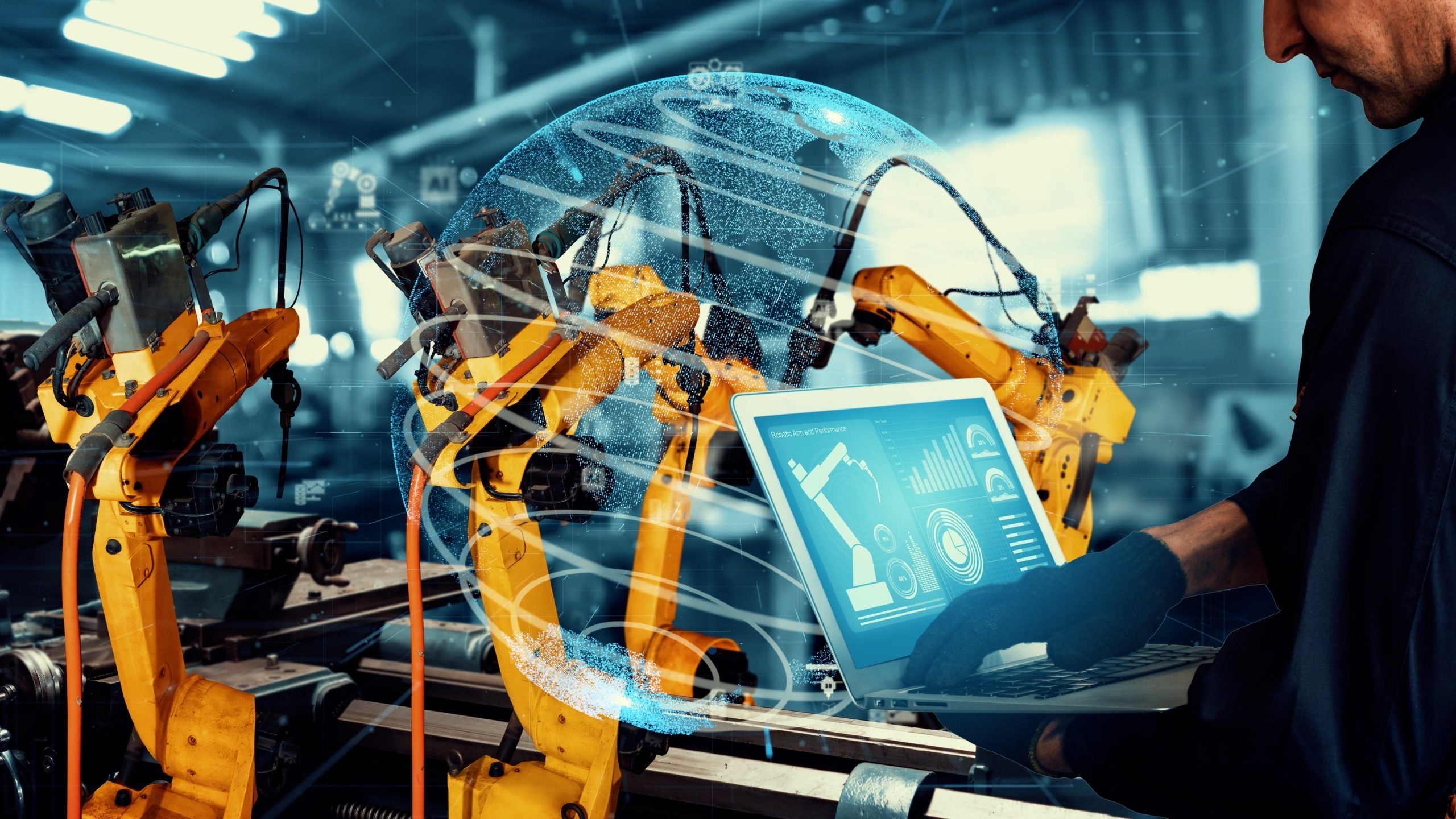The India industrial automation market is expanding rapidly and becoming focal point in global manufacturing ecosystem. As of 2025, automation-related investments saw 38% year-over-year growth. The growing manufacturing sector is fueling the demand for automation-led productivity improvements. The market is also supported by India’s expanding pool of automation-ready talent, with over 85,000 engineers trained in control systems, AI-ML, and mechatronics in 2024. Moreover, government initiatives including “Make in India” are further strengthening foundation of automation adoption. In 2024, government facilitated over ₹3.2 lakh crore in approved industrial projects integrating automation technologies like robotics.
What’s Driving Industrial Automation Market in India?
- The integration of advanced technologies and adoption of industry 4.0 is driving the industrial automation market. The integration of industrial IoT enables real-time data collection and analysis, thus improving operational efficiency. Similarly, robotics and automation enhance precision and reduces human intervention in manufacturing processes.
- The industries are focusing on improving efficiency and reducing operational costs, creating opportunities for industrial automation. The automation reduces dependency on manual labor, thus addressing challenge related to labor shortages and rising wages. Moreover, automated system ensures uniformity in production and minimises errors by enhancing product quality.
- The Indian automation sector is attracting foreign direct investment and global partnership. The country’s geographic position offers access to emerging markets in Asia and Africa. Partnerships between Indian companies and global automation leaders are facilitating technology transfer and innovation. These investments and collaborations accelerate the growth and modernization of India’s industrial automation landscape.
Market Competition
The India industrial automation market is highly competitive, with global giants and emerging local players fighting for dominance. The key players dominating the landscape include ABB, Honeywell Automation, and Siemens. ABB India is a leading player and focuses on electrification, robotics, and motion control solutions. In 2024, company reported 50% increase in net profit due to growing demand across infrastructure and manufacturing sectors. Honeywell India focuses on energy management systems and building automation. The company recently partnered with Indian Railways to automate HVAC controls across 200 stations, reducing power usage by 30%. Meanwhile, Siemens commissioned three advanced automation centers in Pune, Chennai, and Ahmedabad to localize control panel manufacturing in 2024.
Skill Gap Hindering Automation Adoption
The India industrial automation market is witnessing a major challenge of lack of skilled workforce availability. In 2024, only 2% of India’s workforce has received formal vocational training. This indicates that majority of workforce lacks specialised skills required for automation roles. Moreover, there is significant mismatch exists between academic curricula and industry needs. This lack of interaction between educational institutions and industry leads to graduates possessing skills that do not align with employer expectations. Addressing these skill gaps is important for country to fully leverage the benefits of industrial automation.
Future Outlook
The India industrial automation market is set to undergo significant transformations through 2030. The market is expected to become one of the fastest-transforming ecosystems globally. By 2030, India is expected to have over 1.8 million skilled professionals in automation-centric roles. This growth will be supported by increasing number of government-run ITIs and polytechnic institutions adopting dedicated automation labs and simulation tools. Furthermore, over 75% of the large-scale Indian manufacturers are expected to implement smart factory modules by 2030. In upcoming years India is set to become a global powerhouse in industrial automation.
Consultant at Nexdigm In their latest publication “India Industrial Automation Market Outlook to 2030: By Component (Hardware, Software), By Industry (Process Automation, Factory Automation, Machine Automation), and By Vertical (Pharmaceutical, Food & Beverage Machinery, Energy Equipment, Packaging Machinery, Automotive, Textile Machinery)” believe that by investing in mid-tier city automation hubs and prioritizing robot-as-a-service (RaaS) models for SMEs, businesses can gain competitive advantage in India industrial automation market.

